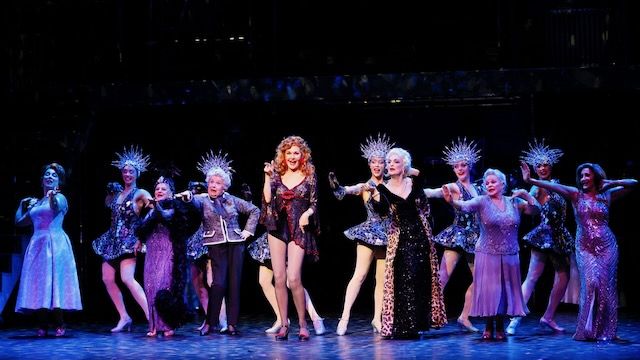Follies
Victorian Opera presents lucky Melbourne theatregoers to the first fully staged, professional production of this Sondheim masterpiece. Before A Little Night Music, Sweeney Todd or Into the Woods were even a glimmer, Follies (originally titled The Girls Upstairs) was a substantial hit! The original 1971 Broadway version (one of the most costly productions for its time), garnered 7 Tony Awards and ran for 522 performances.
The plot of Follies centres around a reunion at the crumbling Weismann Theatre on Broadway, which is set for demolition. The former showgirls, known as the Weismann Girls, gather to reminisce about their past performances during the interwar period. As they reflect on their past, memories of their younger selves blend with the present. The narrative delves into themes of nostalgia, regret, and how the past influences current relationships. Does it have a happy ending? The emotional journey keeps you guessing right until the final curtain.
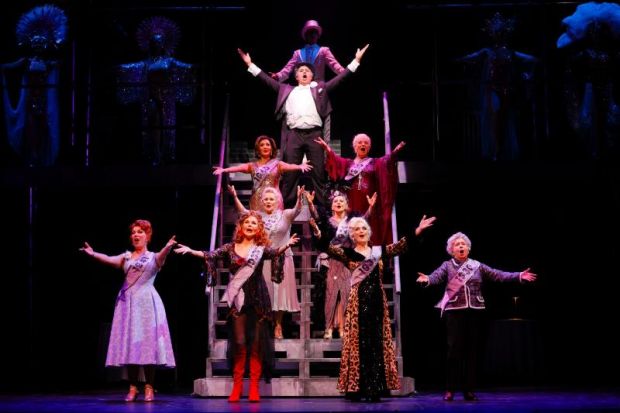 Director Stuart Maunder (Tales of Hoffmann, G&S Festival, La Rondine), with 44 years of experience in theatre and opera, possesses an innate expertise to engage audiences through compelling storytelling and translating these narratives into impactful visual experiences. Right from the opening timpani roll of the Prologue, I was immediately drawn into the theatre’s ambience. The blend of the environment, lighting, and the captivating Weismann showgirls moving gracefully through the space, enchanting the audience and whisking us back through a time warp to the 1940's. Within this short time I knew the audience was in for something really special – a once in a lifetime experience!
Director Stuart Maunder (Tales of Hoffmann, G&S Festival, La Rondine), with 44 years of experience in theatre and opera, possesses an innate expertise to engage audiences through compelling storytelling and translating these narratives into impactful visual experiences. Right from the opening timpani roll of the Prologue, I was immediately drawn into the theatre’s ambience. The blend of the environment, lighting, and the captivating Weismann showgirls moving gracefully through the space, enchanting the audience and whisking us back through a time warp to the 1940's. Within this short time I knew the audience was in for something really special – a once in a lifetime experience!
Costume Designer Roger Kirk (The Boy From Oz, The King & I, King Kong – The Musical) sure knows how to create masterpieces! The well researched, elegant costumes align with the varied personalities in the performance. The rich fabrics, intricate embellishments, vibrant colours and vintage accessories sparkle! The reflective 'mirror dresses' worn in the song “Who's That Woman?” (augmented by large mirror balls) are a standout element and a visually stunning end to Act One. The costumes in the “Loveland” sequence are a dazzling array of opulence and style! The exquisitely crafted robe à la francaises (with a contemporary twist) and oversized powdered wigs evoke a fantastical, dream-like essence, capturing the spirit of Versailles romance. Other outfits, including white tux and top hats, draw inspiration from the Ziegfeld Follies or the Rockettes. Each character’s attire is meticulously designed to reflect their unique situation through genre episodes that correspond with suitable variety acts. The price of admission is justified if only to see the lavish costumes that Kirk has designed.
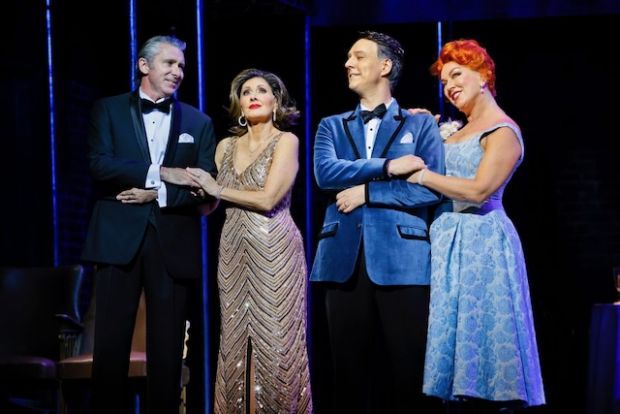
Kirk's set design consists of the backstage area of a theatre (with visibly crumbling brick walls) ready for demolition. The clever use of two staircases attached to a massive raised catwalk move into different configurations allowing the showgirls and other characters to move around the stage with ease. It is also used to create the illusion of different parts of the theatre including the dressing rooms of the main characters as they interact with their past selves. A bar at the rear of the stage provides refreshments for the guests. Much of the dialogue unfolds on either side of the stage where the characters sit at cafe chairs and tables and unburden their problems. During the final numbers of Act Two, full stage billowing curtains (in delicious hues of blue, red & green) and the Palais Theatre’s main burgundy curtain are expertly synchronised with musical and lighting
cues, enhancing the spectacle and transporting us to the glamour of the former Weismann Theatre three decades earlier.
Choreography by Yvette Lee (Victorian Dance Festival, Dancing With the Stars, Victorian State School Spectacular) incorporates elements of pastiche, drawing from various musical styles of the eras portrayed. Each movement and gesture is carefully crafted to trigger memories and emotions related to the characters’ histories and current struggles. The performers express their narratives through both music and physical movements, allowing for a profound examination of themes such as nostalgia, loss, and identity. Lee faces the challenge of choreographing two versions of each main character portrayed by actors with a thirty-year age difference. Nevertheless, the outcome is impressive and enhances the show’s dynamics. Notable ensemble highlights include the enchanting “Who’s That Woman? (Mirror Mirror)” and the lively “Loveland” sequence, which stands out as a mini musical in itself. Audience members have lauded it as some of the best choreography seen recently, praising Lee and the ensemble for their impeccable performance.
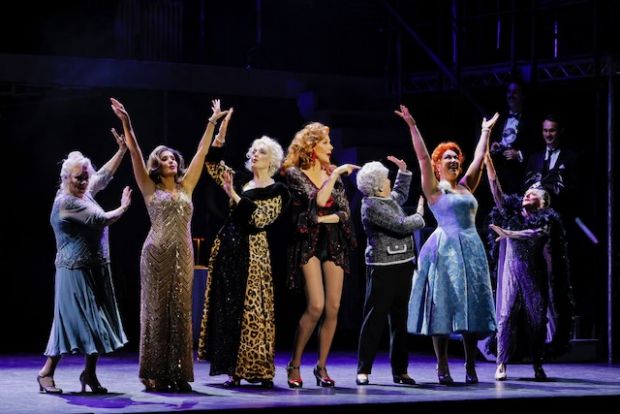
Lighting Design by Gavan Swift enhances the emotional resonance and nostalgia of the production, contrasting youthful memories with the realities of ageing. Swift utilises warm tones to evoke feelings during musical sequences and dynamically adjusts lighting to highlight key moments, crafting a dreamlike ambience that reflects the characters’ inner thoughts and regrets while guiding the audience through intricate storytelling. Sound Design by Samuel Moxham creates an immersive experience that engages the audience in the action. It feels as though we are part of the backstage celebration alongside the actors. Moxham’s design ensures clarity in dialogue and rapid lyrics, allowing audiences to understand all elements distinctly. The clever use of vocal filters to shape the sound of the performers voices was well suited particularly during the vaudeville scenes.
Musical Director Phoebe Briggs (Four Saints in Three Acts, The Sleeping Beauty, Black Rider) and members of Orchestra Victoria warrant significant praise for their exceptional performance. The Prologue and Overture showcased the remarkable talent and adaptability of these musicians. Any staging of a Sondheim production poses musical challenges, but Follies, with its varied score that blends jazz, vaudeville, and classic Broadway styles, is especially intricate.
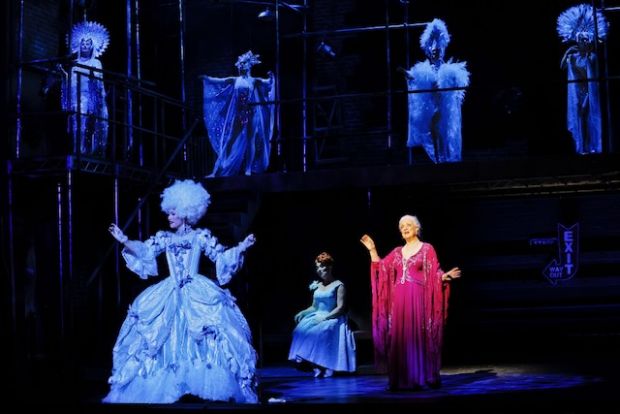
The cast features a lineup of esteemed Australian theatre legends, alongside emerging talents and an impeccable ensemble. In a role unlike any previous ones, Australia's leading lady Marina Prior (Pirates of Penzance, The Phantom of the Opera, Les Misérables) portrays Phyllis Rogers Stone, the stylish and elegant (with an occasional acidic tongue) former showgirl married to Benjamin Stone (the renowned philanthropist and politician) whose relationship is marked by underlying tension. Prior's storytelling abilities were showcased during “Could I Leave You?” and “The Story of Lucy and Jessie”. The latter piece, showcasing Sondheim’s signature complex melodies and lyrics along with a challenging dance routine, is among the most demanding numbers in Follies, yet Prior executed it with apparent ease, undoubtedly due to her extensive performance experience.
Adam Murphy (Happy End, Fun Home, Shakespeare in Love) is perfectly cast in the role of Phyllis's husband Benjamin Stone. Murphy's rich baritone vocals on “The Road You Didn't Take” and “Too Many Mornings” are sung with emotional depth, highlighting his complex and vulnerable personality. His rendition of “Live, Laugh, Love” reflects Ben's attempt to mask his personal demons with a facade of glitz and charm, akin to the style of Cole Porter and the golden age of Hollywood. This final number in Act Two is a showstopper in every sense of the word!
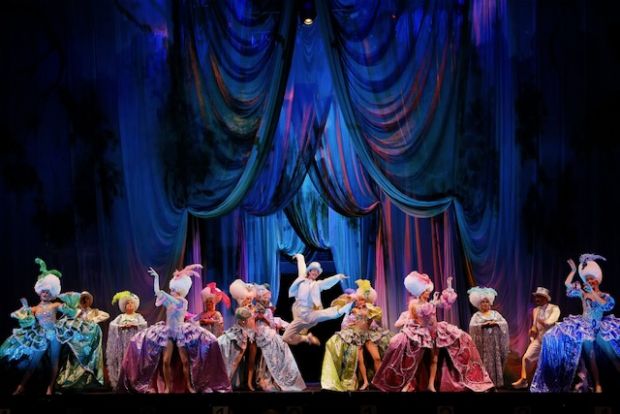
Antoinette Halloran (Sweeney Todd, Tosca, Merry Widow) is Sally Durant Plummer, the anxious and troubled former showgirl married to Buddy but still madly in love with Ben. This role represents a significant departure from Halloran's established opera career, yet she commands the stage at every turn. Her honeyed vocals on “Too Many Mornings”, “In Buddy's Eyes” and the crowd favourite torch song “Losing My Mind” were emotional and introspective. Here's hoping we see more of Antoinette in future musicals!
Alexander Lewis (Chess, West Side Story, Carousel) is Buddy Plummer, a travelling salesman in a troubled marriage to Sally, grappling with the reality of his unfulfilled dreams. As Buddy descends into madness throughout the performance, one can’t help but feel sympathy for him. Lewis portrays this character with such authenticity that it is difficult to believe he is merely acting. The stylish elements used in Lewis's rendition of “The Right Girl” could've easily been inserted into West Side Story (whose lyrics are also by Sondheim) with its punchy lyrics and dance moves. The vaudeville styled “Buddy's Blues” also called “The God-Why-Don't-You-Love-Me Blues” with its rapid-fire lyrics and complex choreography conveys both the manic energy of Buddy and the underlying sadness of his situation.
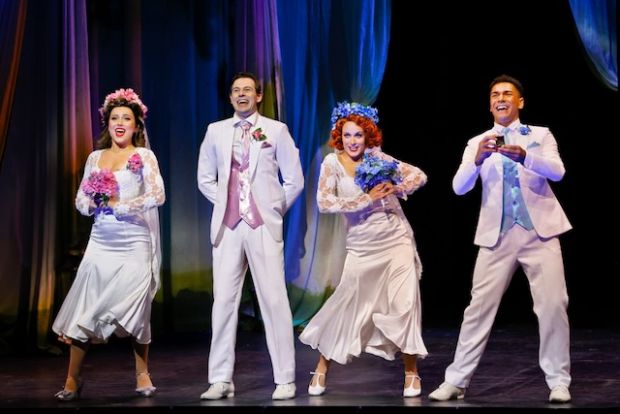
Other notable roles, each with their own showstopper song (of which many have become iconic Sondheim hits) include: Anne Wood (Carlotta Campion) “I'm Still Here”; Rhonda Burchmore (Stella Deems) “Who's That Woman?”; Colette Mann (Emily Whitman) and Tom Blair (Theodore Whitman) “Rain On The Roof”; Evelyn Krape (Solange La Fitte) “Ah! Paris!”; Geraldine Morrow (Hattie Walker) “Broadway Baby”; Stephen Smith (Roscoe/Max Deems) “Beautiful Girls”; Grant Piro (Dimitri Weismann); Mia Simonette (Young Sally); Jack Van Staveren (Young Ben); Traao Buchanan (Young Phyllis) and Jacob Steen (Young Buddy) “Waiting For The Girls Upstairs” and “You're Gonna Love Tomorrow”.
Merlyn Quaife (Heidi Schiller) and Nina Korbe (Young Heidi) performed “One More Kiss”, the first song written by Sondheim for Follies, which he cherished. It is also my favourite from the show, and after listening to numerous renditions, I believe tonight’s performance was the most exquisite and flawlessly executed I’ve ever experienced. The enthusiastic audience shared this sentiment! Kudos to Merlyn and Nina! (If only there was a cast recording of this production!)
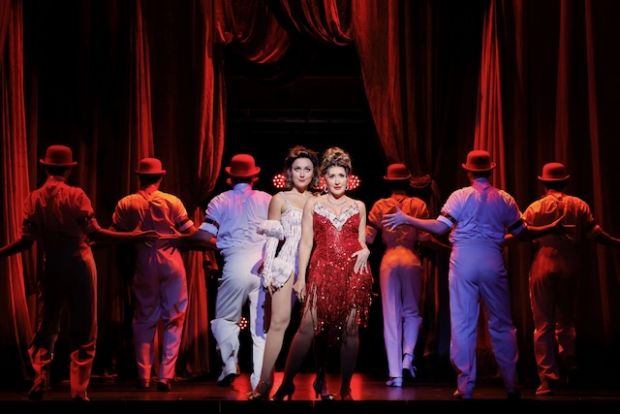
I want to acknowledge the exceptional talents of the ensemble: Jared Bryan, Sienna Embrey, Mia Fenelon, Mitchell Fistrovic Doidge (Assistant Choreographer), Mikaela Jade, Pip Keltie, Emily Lodge, Callum Marshall, James Maxfield, Kristina McNamara, Max Patterson, Michael Ralph and Carter Rickard. You are all equally amazing!
If you appreciate Sondheim’s work, this performance will captivate you. Even if you haven’t yet become a fan, you might find yourself won over by the conclusion of the night! I certainly have!
Jonathan Cox
Photographer: Jeff Busby
Subscribe to our E-Newsletter, buy our latest print edition or find a Performing Arts book at Book Nook.

